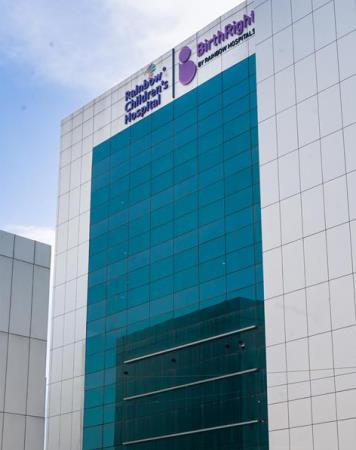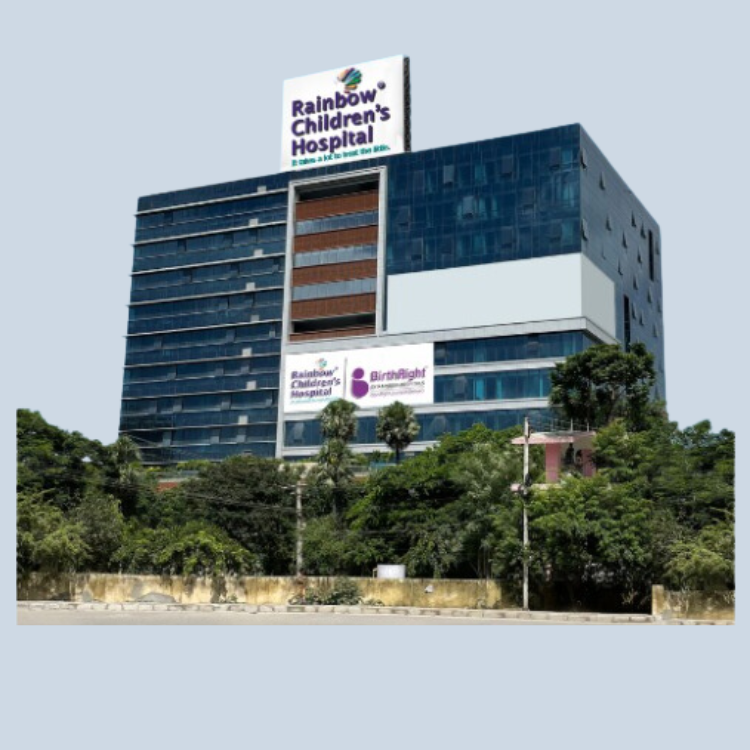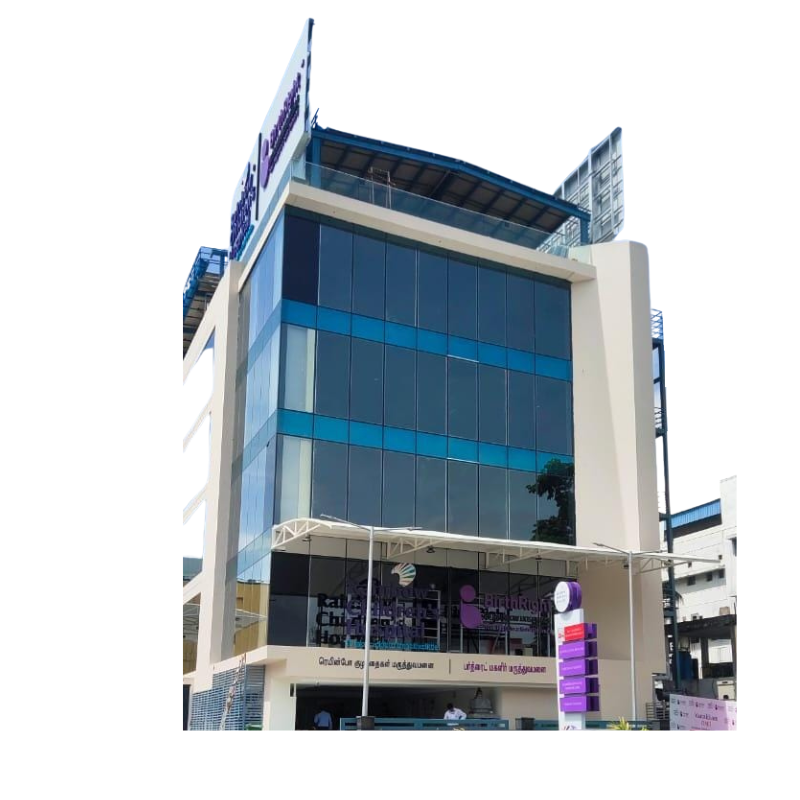Seamless support from diagnosis to post treatment care
Vaginal Birth After Cesarean (VBAC)
Many women who have undergone a caesarean section have the opportunity to safely opt for a vaginal delivery for their subsequent child, a choice known as Vaginal Birth After a Caesarean (VBAC). However, the advantages and disadvantages of this decision will be thoroughly discussed with you by your Obstetrician at BirthRight, empowering you to make an informed choice.
At BirthRight by Rainbow Hospitals, we are fully supportive of your decision to pursue a vaginal birth, even if you have previously undergone a C-section. Medically speaking, the option of having a vaginal birth after a prior C-section is indeed feasible, although consultation with your physician is essential. We have a team of certified specialists and nurse-midwives who specialize in conducting vaginal births after cesarean (VBAC). Seeking guidance from a VBAC specialist in your vicinity can provide you with a clearer understanding of the entire process, enabling you to make an informed decision that best suits you and your baby.
If you have previously delivered a child through c-section, you have two choices:
-
Opt for an elective repeat cesarean delivery.
-
Consider a Trial of Labor After Cesarean (TOLAC), with the aim of achieving a vaginal delivery.
BirthRight by Rainbow Hospitals will provide you with comprehensive information on both delivery options, facilitating your decision-making process. You can consult with your healthcare provider regarding the information we offer and decide whether VBAC is the right choice for you at our hospital.
..
Find a Doctor
Expertise you can trust, Meet our esteemed doctors who bring exceptional knowledge, compassion, and innovation to provide top-notch care for your health and well-being.
Our Hospitals and ClinicsOur Hospitals and Clinics
Rainbow Children's Hospital stands as a testament to the hospital's continual pursuit of excellence and innovation, providing specialized care for women and children.
Request a Call back
Tap to Fill FormRequest a Call back
What Are People Saying About Us
Embark on a journey of inspiration and hope with our patient success stories, complemented by informative videos from our dedicated doctors.
The term vaginal birth after cesarean section also known as VBAC is used to describe women who have a vaginal birth after having had a previous cesarean surgery. BirthRight by Rainbow Hospitals has some of the best obstetricians who specialise in vbac delivery. Their expertise enables them to educate women on ways they can have a vaginal birth after cesarean successfully.
To increase chances of a VBAC delivery, ensure that the doctor has a comprehensive understanding of your medical history, including any documentation of previous uterine surgeries, including cesarean sections. The probability of a successful VBAC may be determined by your medical professional. Consider having your baby in a setting that can manage an emergency C-section as well. Discussing the risks and benefits of VBAC throughout pregnancy, especially if certain risk factors arise can help. BirthRight by Rainbow Hospitals has an expert team of doctors who specialise in VBAC deliveries, handling high-risk pregnancies and pregnancy counselling.
If you had a C-section before, you essentially have two options when it comes to birthing again. You may either choose to have a cesarean delivery scheduled again or you can opt to give vaginal birth next time. Giving birth vaginally after previously having C-section is called VBAC. You can talk to a VBAC specialist near you to get a better understanding of the whole process, the advantages and disadvantages, as well as, the risks and complications that may arise.
Yes, with the right guidance and treatment from expert obstetricians and gynecologists you can increase your chances of a vaginal birth after cesarean / VBAC delivery. A non-recurrent indication for a past caesarean section, one prior vaginal birth, and spontaneous labour are good predictors of successful VBAC, but multiple prior cesarean sections, maternal obesity, diabetes, and a short interdelivery period are negative predictors that can hinder the chances of a successful VBAC delivery.
Having vaginal birth is considered to be a more natural way of giving birth. Generally, this means you will:
- Have less pain
- Recover more quickly
- Be able to go back to your daily activities in less time
During a vaginal delivery, you will have more alert during birth. After delivery, you will be able to leave the hospital sooner. Also, there won't be any scarring on your uterus, which is caused by a cesarean. This is an important factor, particularly if you wish to have more children. With more C-sections, your options for delivery get reduced if you become pregnant again. A VBAC specialist near you will help you make the correct decision in this regard. They will guide you towards the safest option possible while keeping in mind your wants.
BirthRight by Rainbow Hospitals in the cities of Hyderabad, Bangalore, Chennai, Delhi, Vizag, Vijayawada has some of the best VBAC delivery specialists who have many years of experience in successfully making vaginal birth after cesarean section possible.
After having a C-section, there is a scar on the uterus and the skin. Some scars have more chances of causing a rupture. The kind of cut determines the kind of scar.
- A low transverse incision is a side-to-side cut that is made across the lower uterine region. This is the most common type of incision with the least chance of rupture.
- A low vertical incision is an up-and-down cut that is made in the lower uterine region. This kind of incision has more risk of rupture as compared to low transverse incisions.
- A high vertical or classical incision is an up-and-down cut that is made in the upper uterine region that is the riskiest to cause a rupture.
Usually VBAC is not always possible at the time of pregnancy. So most birth centers may not have an emergency care unit to handle pregnancy complications. It is always best to consider having your baby in a setting that can manage an emergency C-section as well. Discussing the risks and benefits of VBAC throughout pregnancy, especially if certain risk factors arise can help. BirthRight by Rainbow Hospitals in the cities of Hyderabad, Bangalore, Chennai, Delhi, Vizag and Vijayawada have an expert team of doctors who specialise in VBAC deliveries and also a maternal intensive care unit for handling high-risk pregnancies in case the need arises.
Attempting to have a trial of labor after cesarean delivery is called a VBAC. The procedure results in natural birth if VBAC is successful. You will be needing another C-section if the process is not successful. A VBAC hospital near you will be the best place for you to have TOLAC. The hospital will be ready to handle any complications that may arise.
Following are the benefits of having a VBAC
- Shorter recovery period
- No need of abdominal surgery
- Less blood loss
- Lower infection risk
A lot of women wish to experience natural birth, and VBAC provides an option for exactly that. If you plan to have more children, you should know that there are certain health concerns associated with cesarean delivery. These concerns can include hysterectomy, bladder or bowel injury, and issues with the placenta in pregnancies in the future. VBAC can help avoid these health concerns. So, you might want to consider this if you are planning to have more children. Consult a VBAC specialist near you before making a decision. It would be beneficial to disclose any problems or complications that you may have faced in your last pregnancy.
If you are pregnant and you had C-section in your previous pregnancy, you should consult about VBAC at your initial prenatal visit itself. Have a discussion with your healthcare provider regarding your expectations and concerns. Provide your healthcare provider with your entire medical history, particularly records of previous cesarean delivery or any other uterine procedures. Your medical records will help determine the chances of VBAC being successful. You will need to discuss the benefits and risks of VBAC throughout pregnancy, particularly if specific risk factors come up.
If you choose to go for VBAC, you can improve your odds of having a positive experience by:
- Learning more about VBAC and taking childbirth classes if needed
- If possible, allow labor to start on its own. Having augmented or induced labor decreases the chances of successful VBAC
Stay flexible if a C-section becomes necessary due to certain complications arising during pregnancy or labor. For instance, you might have to go for cesarean delivery if your baby is in an abnormal position, your labor fails to progress, or there's a problem with the umbilical cord or placenta.
Some common risks associated with VBAC include blood loss, infection and other such complications. A serious but rare risk with VBAC is the rupture of the scar of C-section on the uterus. While it is rare, if it happens it can harm the baby and the mother as well. VBAC shouldn’t be tried if there is a high risk of the uterus rupturing.
You can go to a VBAC hospital near you to get more information on the procedure. You may have to undergo some tests ordered by a VBAC specialist near you to determine if you are a good candidate for VBAC. Following are the conditions that make you a good candidate for VBAC:
- Your previous C-section incision was a low-transverse (horizontal) uterine incision instead of a vertical or classical incision in your upper uterus or T-shaped, which comes with a higher risk for uterine rupture.
- You have a large enough pelvis for your baby to safely pass through. While this can't be known for sure, our practitioner may examine your pelvis for making an educated guess.
- You haven't ever had any other uterine surgery like myomectomy for removing fibroids
- You haven't ever had a uterine rupture
- You don't have a medical condition or obstetric issues like large fibroid or placenta previa that would increase the risk during vaginal delivery
Some factors that may play a role in unsuccessful VBAC include:
- Being an older mother
- Having a high body mass index (BMI)
- Having a baby with a high birth weight (more than 4,000 grams)
- Having pregnancy go beyond 40 weeks of gestation
- Having a short span between pregnancies (less than 18 months)
Quick Links
- Best VBAC Doctors In Hyderabad
- Best VBAC Doctors In Bangalore
- Best VBAC Doctors In Delhi
- Best VBAC Doctors In Chennai
- Best VBAC Doctors In Vijayawada
- Best VBAC Doctors In Vizag
- Best VBAC Doctors In Banjarahills
- Best VBAC Doctors In Hyder Nagar
- Best VBAC Doctors In Secunderabad
- Best VBAC Doctors In Lb Nagar
- Best VBAC Doctors In Kondapur
- Best VBAC Doctors In Bannerghatta
- Best VBAC Doctors In Hebbal
- Best VBAC Doctors In Currency Nagar
- Best VBAC Doctors In Governerpet
- Top VBAC Doctors in India
- Vbac Doctors In India
- Best Vbac Doctors In India
- Famous Vbac Doctors In India
- Top Vbac Doctors In India Near Me
- Famous Vbac Doctors In India Near Me
- Best Vbac Doctors In India Near Me
- Vbac Doctors In India Near Me
- Top VBAC Doctors In Kondapur
- VBAC Doctors near me in Lb Nagar
- VBAC Doctors near me in Kondapur
- VBAC Doctors near me in Banjarahills
- VBAC Doctors near me in Hyder Nagar
- VBAC Doctors near me in Secunderabad
- Best Vaginal Birth After Cesarean (VBAC) Specialist in Sarjapur Road, Bengaluru
- Best Vaginal Birth After Cesarean (VBAC) Specialist in Himayatnagar, Hyderabad
- Best Hospital For Normal Delivery After Cesarean in Anna Nagar, Chennai - Rainbow Children's Hospital



















































































































